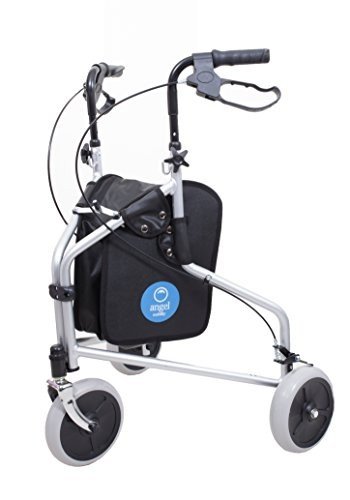Mobility Scooters: A Comprehensive Guide
Mobility scooters have actually ended up being an important mode of transportation for lots of people dealing with mobility difficulties. This post explores the numerous facets of mobility scooters, including their types, benefits, features, and a guide for potential purchasers.
Understanding Mobility Scooters
Mobility scooters are electrically powered gadgets developed for people with limited mobility. They offer a way of transport for people who might have trouble strolling but still want to retain their self-reliance. They come in numerous designs and features to deal with a vast array of requirements.
Kinds Of Mobility Scooters
Mobility scooters can typically be classified into 3 main types:
| Type | Description | Best For |
|---|---|---|
| Compact Scooters | These are small and lightweight, perfect for inside and short journeys. | Users with minimal storage space or those who travel often. |
| Mid-size Scooters | A balance between mobility and stability, appropriate for both indoor and outdoor use. | Those who need to cover a variety of surfaces. |
| Sturdy Scooters | Big and robust, designed for rugged outside use and much heavier individuals. | Users requiring additional weight capability or going off-road. |
Secret Features of Mobility Scooters
The choice of mobility scooter frequently depends upon the functions that line up with private needs. Here are a few of the essential features to think about:
- Weight Capacity: Mobility scooters include different weight limits. It is essential to choose a scooter that can sufficiently support the user's weight.
- Variety: The distance a scooter can travel on a single charge varies. Depending upon user requirements, one might choose scooters with a variety of up to 40 miles.
- Speed: Most mobility scooters can reach speeds in between 4 to 8 mph. Consider what speed is comfortable and safe for the desired environment.
- Turning Radius: A compact turning radius is necessary for indoor usage, enabling much easier navigation in tight spaces.
- Battery Type: The type of batteries utilized can impact the scooter's efficiency. Lead- invalid scooters uk and lithium-ion batteries are the most typical.
Advantages of Using Mobility Scooters
The advantages of mobility scooters extend beyond simply transport. Some key benefits include:
- Independence: Users can browse their environment without depending on caregivers, promoting self-reliance and self-confidence.
- Health Benefits: Using a scooter can encourage outdoor activity, causing physical and psychological health enhancements by reducing feelings of isolation.
- Convenience: Scooters can easily be run in numerous environments, whether inside your home, in shopping malls, or outdoors.
Important Considerations When Buying a Mobility Scooter
When purchasing a mobility scooter, several factors to consider can help ensure that you pick the best model:
Assess Individual Needs:
- Mobility level: Consider just how much assistance the individual will require.
- Series of use: Determine where the scooter will primarily be utilized (inside, outdoors, on rough surfaces, etc).
Test Drive:
- Always test drive numerous designs to find an appropriate fit. Pay attention to comfort, ease of steering, and the scooter's responsiveness.
Evaluation Safety Features:
- Look for scooters with appropriate security features like lights, indications, and anti-tip styles.
Examine Warranty and Service Options:
- A reputable guarantee and offered service alternatives are vital for long-term use.
FAQs about Mobility Scooters
1. How fast do mobility scooters go?Mobility scooters typically have speeds varying from 4 to 8 mph, with the majority of developed for safety rather than high-speed travel. 2. Are there weight limitations on mobility scooters?Yes, mobility
scooters feature specific weight limits, frequently ranging from
250 pounds to over 500 pounds, depending upon the model. 3. Can mobility scooters be utilized indoors?Certain designs, especially compact scooters, are specifically designed for
indoor use and are simpler to steer in tight spaces. 4. How typically do the batteries need to be replaced?Battery life can differ based upon use, but generally, with appropriate care, batteries might last in between 1 to 3 years before requiring replacement
. 5. Are mobility scooters covered by insurance?Coverage can vary, but some insurance coverage strategies, consisting of Medicare and Medicaid, might cover part of the expense. It's recommended to consult private insurance coverage suppliers. Mobility scooters act as a
important tool for lots of people, enabling them to maintain
their flexibility and independence. By understanding the different types and features of mobility scooters, individuals can make educated choices tailored to their specific requirements.
Whether used for errands, socializing, or leisurely activities, mobility scooters can boost the quality of life for those with mobility limitations. Purchasing a mobility scooter is a decision that can considerably impact an individual's day-to-day life. Therefore, people should thoroughly examine their options and select a design that best aligns with their lifestyle and mobility requirements
.

